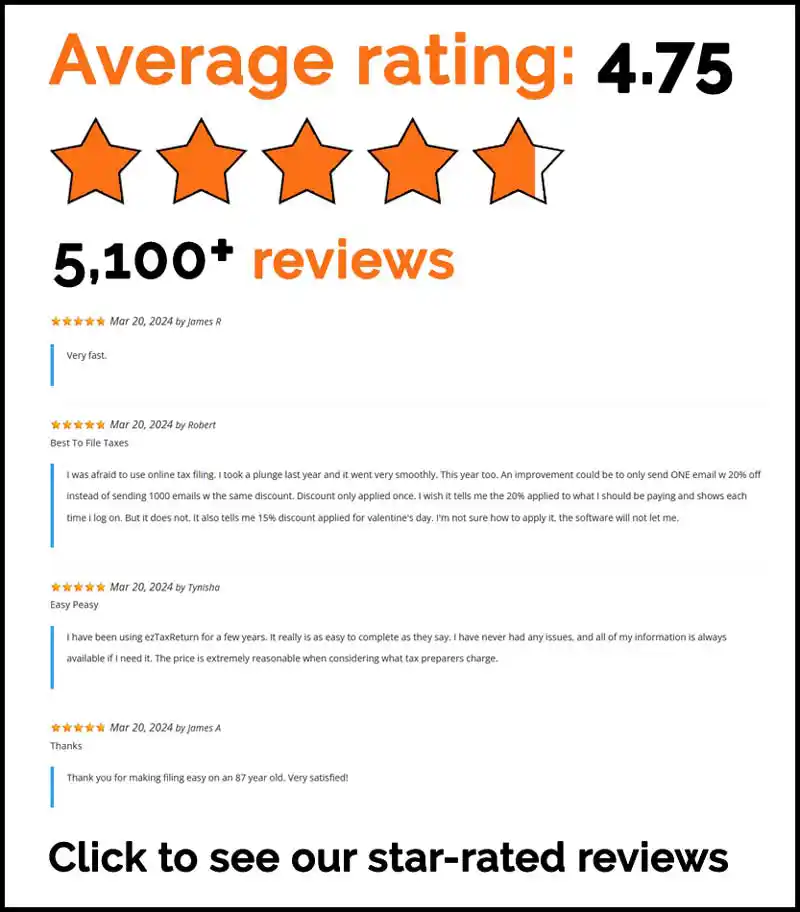The information in this article is up to date for tax year 2025 (returns filed in 2026).
Qualified Charitable Distributions (QCDs) let those 70½ or older donate directly from their IRAs to charities, avoiding taxable income. This article explains how QCDs work, who can use them, and their tax benefits.
Key Takeaways
- Qualified Charitable Distributions (QCDs) allow IRA owners aged 70½ or older to make direct donations to eligible charities, exempting these funds from taxable income and potentially lowering their tax bracket.
- To qualify as a QCD, donations must go directly from the IRA to a recognized 501(c)(3) charity, and cannot exceed $108,000 per person per year.
- It’s vital to report QCDs accurately on your tax return using IRS Form 1040 or 1040-SR, as misreporting can lead to tax complications.
Understanding Qualified Charitable Distributions
A Qualified Charitable Distribution (QCD) is a powerful tool that allows IRA owners to donate directly to qualified charities, bypassing the usual tax implications of IRA distributions. Transferring funds directly from your IRA to a charity allows you to exclude these distributions from your taxable income, resulting in significant savings compared to standard IRA distributions.
The beauty of QCDs lies in their simplicity and efficiency. For those aged 70½ or older, QCDs offer a way to meet required minimum distributions (RMDs) in a tax-efficient manner. Rather than taking a taxable distribution and then donating the funds—potentially pushing you into a higher tax bracket—a QCD enables you to give directly to the charity and avoid income tax altogether. The maximum amount that can be transferred through a QCD is $108,000 in 2025, offering a substantial potential impact on both your tax situation and the taxable amount related to the causes you care about, while also helping you manage your annual RMD.
Contributions made through QCDs do not count towards the thresholds for tax deductions on itemized deduction giving. This makes them an attractive option for those who want to make a significant charitable deduction impact without the complications of itemizing deductions on their tax return.
Eligibility for Making QCDs
Not everyone can make a qualified charitable distribution. To be eligible, individuals must be aged 70½ or older. Attempting to execute a QCD before reaching 70½ will result in the distribution being taxed as regular income, making the age requirement essential.
QCDs can be made from various types of IRAs, including traditional ira, inherited ira, inactive sep ira, and inactive SIMPLE IRAs. However, many are surprised to learn that qualified charitable distributions cannot be made from 401(k) plans. The maximum annual limit for QDCs is $108,000 per person. This means that married couples, with each spouse having their own separate limit, can collectively contribute up to a potential total of $216,000.
To qualify, the distribution must be made directly from the IRA to the charity; receiving the funds first disqualifies them from being counted as a QCD. This direct transfer rule ensures that the donation maintains its tax-free status.
Benefits of Qualified Charitable Distributions
Qualified charitable distributions offer a range of tax benefits that can significantly enhance your financial planning and charitable giving. One of the most appealing benefits is that QCDs are excluded from taxable income, providing substantial savings compared to standard IRA distributions. This exclusion can help lower your modified adjusted gross income (MAGI), which in turn can reduce your Medicare premiums and taxes.
For individuals aged 70½ or older, making a QCD can help meet required minimum distributions (RMDs) in a tax-efficient manner by reducing taxable income. This can be particularly advantageous for those aged 73 or older, as it helps satisfy RMD requirements while potentially lowering future RMDs by decreasing the IRA balance. Moreover, by reducing your taxable income through QCDs, you can lower your exposure to the Net Investment Income Tax (NIIT) and minimize the impact on your Social Security benefits to reduce required minimum distributions.
For a QCD to qualify as tax-free, the funds must be sent directly to the charity. This direct transfer ensures that the distribution maintains its generally tax free status and provides the intended tax benefits.
Types of Eligible Charities for QCDs
Not all charities are eligible to receive qualified charitable distributions. To qualify for a QCD, donations must be made to a recognized 501(c)(3) charitable organization. These organizations include public charities, but exclude private foundations, donor-advised funds, and supporting organizations.
Ensuring that the charity you choose is a qualified charitable organization as defined in the tax code is crucial. Charities that provide goods or services in return for donations are also not an eligible charity to receive QCDs. This restriction maintains the integrity of the QCD, ensuring the donation is purely charitable without any personal benefit to the donor.
A well-informed advisor can assist in selecting the right charities that qualify for QCDs, enhancing the impact of your donations. This guidance can be invaluable in navigating the complexities of charitable giving and ensuring that your contributions are directed to eligible organizations.
Potential Drawbacks of QCDs
While qualified charitable distributions offer numerous benefits, they also come with some potential drawbacks. For instance, a QCD may not be as effective if you prefer donating appreciated securities or taking a current year tax deduction instead.
Additionally, donors cannot receive any perks or benefits when making a qualified charitable distributio. Any goods or services provided in exchange for your donate money will disqualify it from being considered a QCD.
Conversely, making QCDs can lower your adjusted gross income (AGI), benefiting your tax situation, including Social Security and Medicare premiums.
Steps to Make a Qualified Charitable Distribution
Making a qualified charitable distribution involves a few straightforward steps, requiring careful attention to detail. Ensure the QCD is made by the tax year’s normal distribution deadline, generally December 31. Consulting your IRA trustee to initiate the QCD before the end of the calendar year is a smart move.
To qualify as tax-free, the QCD must be paid directly from the IRA to the charity. Checks made payable to the IRA owner do not qualify as a QCD. Obtaining a written receipt from the charitable organization confirming the QCD—including the date, amount, and acknowledgment that no benefits were received—is also essential.
Reporting QCDs on Your Tax Return
Reporting qualified charitable distributions on your tax return is straightforward but requires attention to detail. Qualified charitable distributions must be reported on your federal income tax return, specifically on IRS Form 1040 or Form 1040-SR. The total IRA distribution is entered on Line 4a, and if the distribution is entirely a QCD, Line 4b should show 0.
Donors must obtain a written acknowledgment from the charity for their contribution to ensure proper reporting. Failing to correctly report your QCDs can result in unintended tax implications.
Strategies for Maximizing QCD Benefits
Maximizing the benefits of Qualified Charitable Distributions requires strategic planning. Combining QCDs with other charitable giving methods, such as donating appreciated securities, can further enhance your tax benefits. Consulting with financial professionals can provide personalized advice on how to incorporate QCDs into your overall financial strategy.
Utilizing these strategies can lead to significant greater tax benefit, allowing you to make a greater impact with your charitable gifts and charitable contributions.
Common Mistakes to Avoid When Making QCDs
When making Qualified Charitable Distributions, it’s essential to avoid common mistakes that can negate the benefits. Exceeding the annual limit for QCDs, which is $108,000 per individual, is a critical error. This limit cannot be combined between spouses, meaning each individual has their own separate limit.
Tracking your contributions throughout the year and ensuring they stay within the limit can help avoid errors. Additionally, being aware of the specific rules and regulations surrounding QCDs is crucial to prevent any missteps.
Summary
In summary, Qualified Charitable Distributions offer a powerful way to support your favorite charities while maximizing your tax benefits. By understanding the eligibility criteria, benefits, and steps to execute a QCD, you can make a significant impact with your charitable contributions. Remember to consult with financial advisors and track your donations carefully to avoid common mistakes. Start your QCD journey today and make the most of your charitable giving!
Frequently Asked Questions
Who is eligible to make a qualified charitable distribution?
If you’re 70½ or older, you can make a qualified charitable distribution from your taxable IRA to charities, with a limit of up to $108,000 per year. It’s a great way to give back while also benefiting your tax situation!
What types of IRAs can be used for QCDs?
You can use traditional IRAs, inherited IRAs, inactive SEP IRAs, and inactive SIMPLE IRAs for QCDs, but not 401(k) plans. So, stick with those eligible accounts for your contributions!
What are the tax benefits of making a QCD?
Making a qualified charitable distribution can significantly reduce your taxable income, potentially lowering your Medicare premiums and future required minimum distributions (RMDs). It’s a smart move if you want to maximize your tax benefits while supporting a charity.
How do I report a QCD on my tax return?
You can report a qualified charitable distribution (QCD) on your tax return by using Form 1040 or Form 1040-SR. Just enter the total IRA distribution on Line 4a and make sure Line 4b shows 0 if the distribution was completely a QCD.
Can I receive any benefits in exchange for a QCD?
You won’t receive any perks or benefits for a qualified charitable distribution (QCD); if you do, it won’t qualify as a QCD. So, it’s all about generosity without expecting anything in return!
The articles and content published on this blog are provided for informational purposes only. The information presented is not intended to be, and should not be taken as, legal, financial, or professional advice. Readers are advised to seek appropriate professional guidance and conduct their own due diligence before making any decisions based on the information provided.




